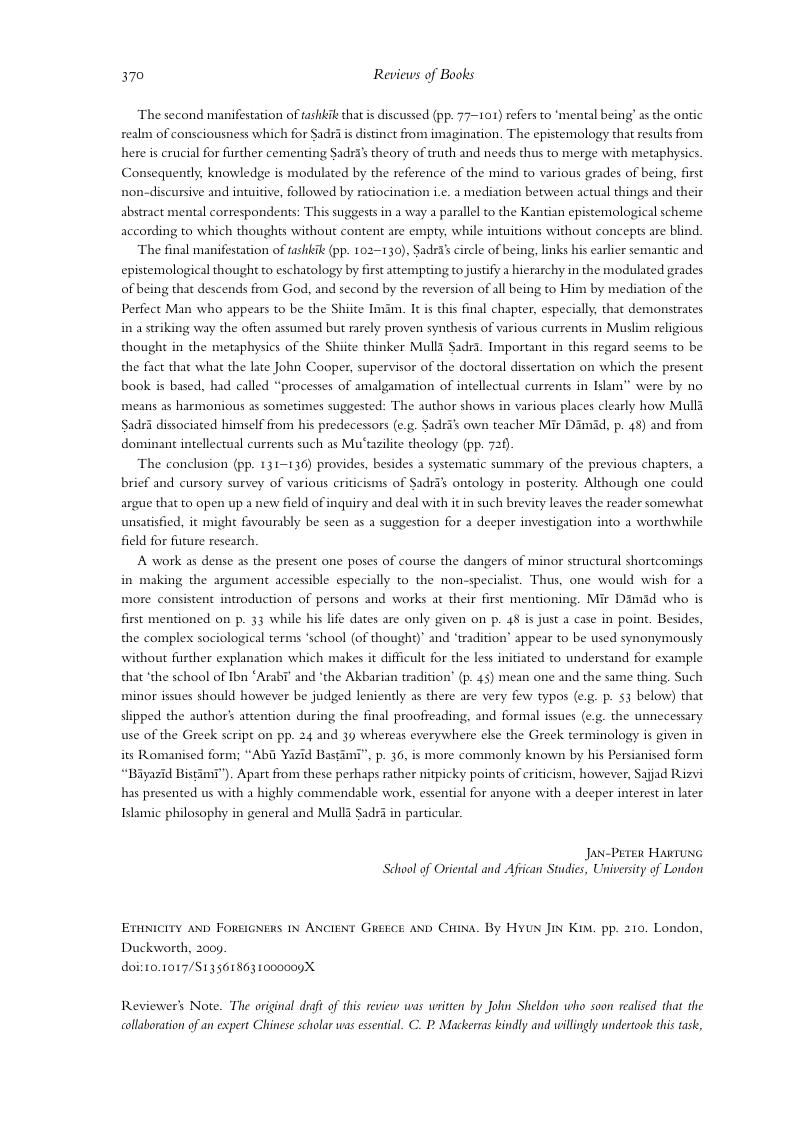No CrossRef data available.
Published online by Cambridge University Press: 04 June 2010

1 p. 4
2 Cf. Herodotus 8.14.2
3 p. 9
4 p. 10
5 Kim's dating of Homer in note 1 p. 148 is misleading. To say that “the Iliad and the Odyssey could not have been composed much earlier than 650 BC” begs the question of what constitutes composition in works formed over centuries in a pre-literate age. His meaning as I understand it would be better expressed by “took their present shape”.
6 Gershevitch, Ilya, ‘Alloglottography of Old Persian’ in Transactions of the Philological Society 77 (1979) pp. 114–155CrossRefGoogle Scholar
7 Beckwith, Christopher I., Empires of the Silk Road, A History of Central Eurasia from the Bronze Age to the Present (Princeton and Oxford, 2009), p. 356.CrossRefGoogle Scholar
8 p. 30.
9 pp. 30–31
10 p. 53
11 p. 71
12 p. 64
13 p. 72
14 Herodotus 2 158 5
15 cf. his treatment of the Scythians pp. 107–112
16 Lo, Yuet Keung, ‘Sima Qian [Ssu-ma Ch'ien] (145–85 B.C.)’, in Woolf, D.R., ed., A Global Encyclopedia of Historical Writing (New York and London, 1998), p. 835.Google Scholar
17 In Herodotus's case it is chiefly though not exclusively the northern border.
18 for Sacae in the Persian army see p. 100
19 especially in the Hippocratic treatise Airs, Waters, Places.
20 e.g. Epiphanius (310/20 – 403CE) Panarion (Adversus Haereses) X
21 It should be noted that Enarees is more likely to be a descriptive appellation rather than a true ethnonym; it is probably an Iranian (Scythian) word meaning ‘unmanly’.
22 Geographical symmetry is seen in the positionings of the Ister (Danube) and the Nile.
23 See p. 177 note 51 for further references and discussion.
24 Mainly the work of A.I.Ivantchik. For references see p. 177 notes 61, 62 and 63.
25 The modern parallel of Kemal Ataturk's attempts to prove the anteriority of Turkish civilisation by bogus derivation of all languages from a putative Proto-Turkish is a very apt one. See p. 156 note 31.
26 Music still retains the Lydian among its modes.
27 p. 143
28 p. 139